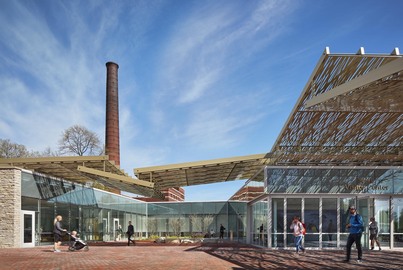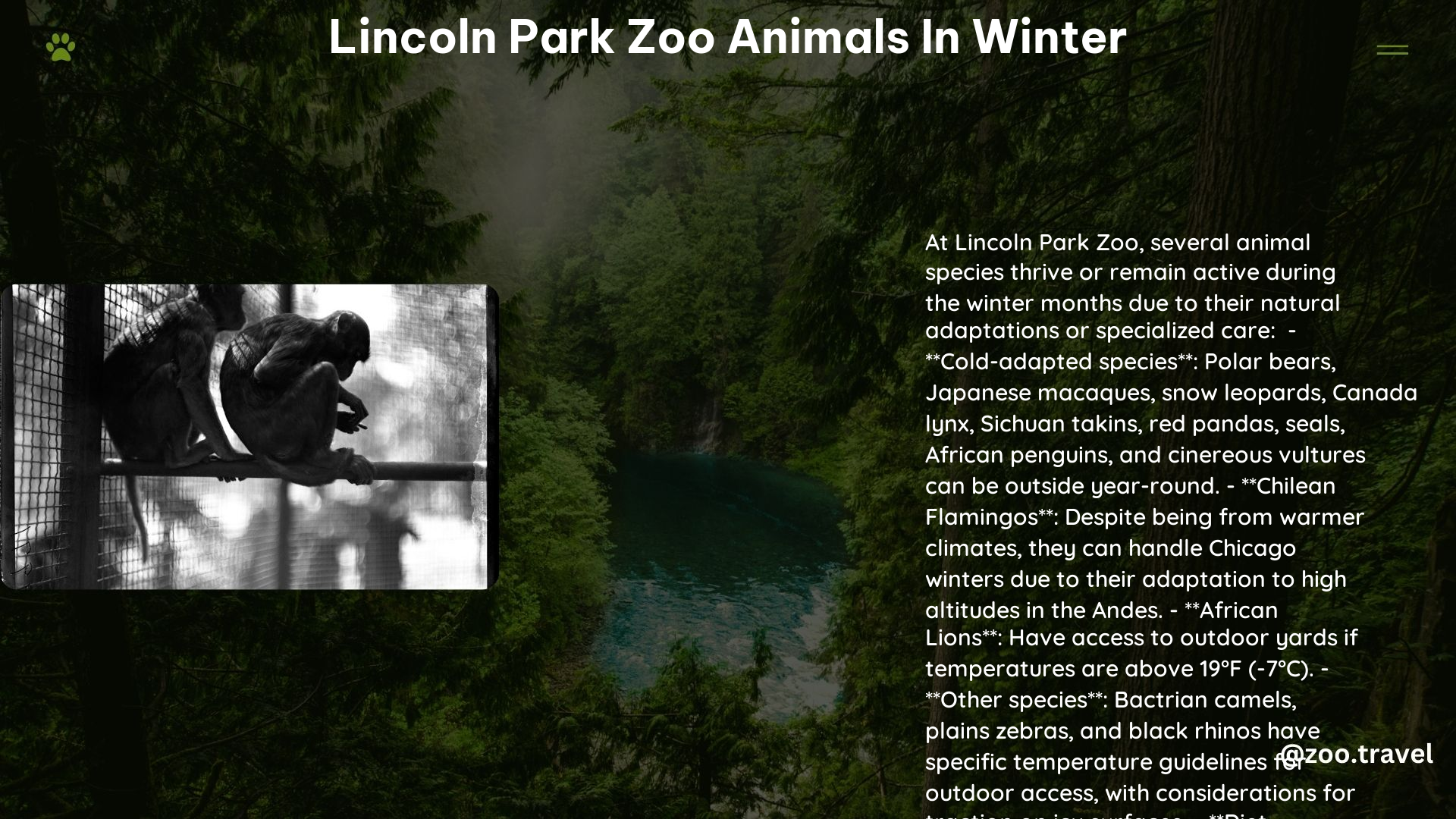Lincoln Park Zoo in Chicago remains a vibrant destination even during the cold months. Many animals thrive in winter conditions, showcasing unique behaviors and adaptations. From cold-hardy species like polar bears and snow leopards to unexpected winter enthusiasts like gorillas, the zoo offers a fascinating glimpse into animal life during the chilly season. This article explores how Lincoln Park Zoo’s inhabitants cope with winter, the special care they receive, and what visitors can expect during the colder months.
What Animals Can You See at Lincoln Park Zoo in Winter?

Which Species Are Most Active in Cold Weather?
Lincoln Park Zoo boasts an impressive array of cold-hardy species that remain active and visible throughout the winter months:
- Japanese macaques
- Snow leopards
- Canada lynx
- Polar bears
- Red pandas
- Seals
- African penguins
- Cinereous vultures
These animals are well-adapted to cold temperatures and can often be seen enjoying the outdoor exhibits even on the chilliest days. For instance, the Japanese macaques, also known as snow monkeys, are famous for their winter antics, often seen playing in the snow or relaxing in their heated rock pools.
What Unexpected Animals Enjoy Winter at the Zoo?
Surprisingly, several species not typically associated with cold climates also thrive during Chicago’s winters:
- Chilean flamingos: Despite their tropical image, these birds are well-suited for cold weather due to their ability to withstand extreme conditions in their native Andean habitats.
- Rhinos, chimpanzees, and gorillas: These animals often interact playfully with snow, using it as a form of environmental enrichment.
- Bactrian camels: With their thick, shaggy coats, these desert dwellers are well-equipped for cold temperatures.
- Sichuan takins: These goat-antelopes have special adaptations like softer, spread-out hooves that provide excellent traction on icy surfaces.
How Does Lincoln Park Zoo Care for Animals in Winter?

What Dietary Changes Are Made for Winter?
The zoo’s animal care team makes several adjustments to ensure the animals’ nutritional needs are met during the colder months:
| Animal Group | Dietary Adjustment |
|---|---|
| Waterfowl, flamingos, swans | Increased food intake |
| Camels, takins, zebras | Higher calorie diets |
| Polar bears, black bears, seals | Reduced diets, relying on summer fat stores |
These dietary changes help animals maintain their energy levels and body temperature during the winter season.
How Are Animal Habitats Modified for Cold Weather?
Lincoln Park Zoo takes several measures to ensure animal comfort and safety during winter:
- Indoor/outdoor access: Most animals have the choice to spend time in either indoor or outdoor habitats, as long as the temperature is within species-specific guidelines.
- Heated elements: Exhibits like the Regenstein Macaque Forest feature heated rocks and sheltered spaces.
- Temperature thresholds: Species such as African painted dogs and plains zebras have specific temperature limits for outdoor access (19°F and 15°F, respectively).
- Traction management: Sand may be used in icy areas to prevent slips and falls, especially for hoofed animals.
What Special Health Monitoring Takes Place in Winter?
The zoo’s keepers and veterinary staff maintain vigilant health monitoring during the winter months:
- Daily observations: Animal behavior and physical condition are closely watched for any signs of cold-related stress.
- Adaptive management: Outdoor access is adjusted based on temperature and other environmental factors.
- Injury prevention: Extra precautions are taken to prevent accidents on icy surfaces, particularly for species like giraffes and zebras.
What Can Visitors Expect at Lincoln Park Zoo in Winter?
What Are the Winter Hours and Special Events?
Lincoln Park Zoo remains open year-round, offering unique experiences during the winter months:
- General hours: 10 AM to 5 PM, with potential extended hours during holiday periods.
- Best viewing times: Late mornings and late afternoons when animals are most active.
- Special events: The zoo may offer seasonal activities or virtual experiences during winter.
Which Indoor Exhibits Provide a Warm Escape?
For visitors seeking refuge from the cold, Lincoln Park Zoo offers several indoor attractions:
- Regenstein African Journey
- Regenstein Small Mammal and Reptile House
- Houston Family Play Treehouse
These indoor spaces not only provide warmth but also offer opportunities to see tropical species and engage in nature-based play activities.
How Does the Zoo’s Nature Boardwalk Change in Winter?
The Nature Boardwalk transforms into a winter wonderland, showcasing the adaptations of local wildlife:
- Observable species: Birds, squirrels, and rabbits can be seen foraging and seeking shelter.
- Natural adaptations: Visitors can witness how wild animals cope with winter conditions in an urban setting.
- Scenic views: The snow-covered landscape offers picturesque photo opportunities.
What Unique Animal Behaviors Can Be Observed in Winter?
How Do Primates React to Snow?
Primates at Lincoln Park Zoo often display fascinating behaviors when encountering snow:
- Gorillas: Known to run through the snow and bring it back indoors for play.
- Chimpanzees: May use snow for novel forms of enrichment and exploration.
- Japanese macaques: Engage in snowball making and other playful activities.
What Winter Adaptations Are Visible in Zoo Animals?
Visitors can observe various winter adaptations among the zoo’s inhabitants:
- Thicker coats: Animals like Bactrian camels and red pandas develop denser fur.
- Changed activity patterns: Some species may be more active during warmer parts of the day.
- Huddling behaviors: Social animals might be seen grouping together for warmth.
- Snow interaction: Many animals use snow for play, cooling, or even as a novel food source.
By visiting Lincoln Park Zoo in winter, guests can witness these unique behaviors and gain a deeper appreciation for the diverse ways animals adapt to seasonal changes.
